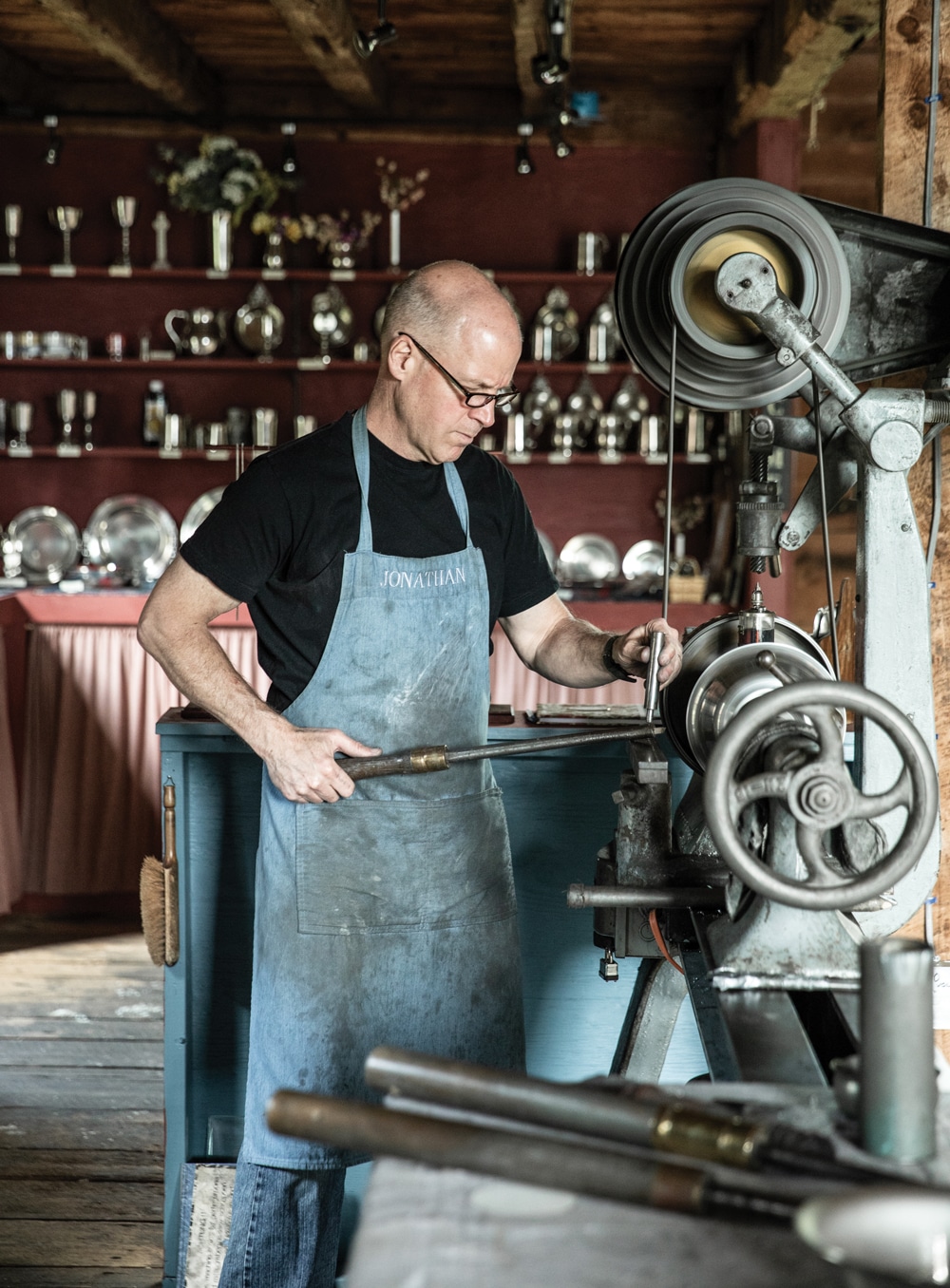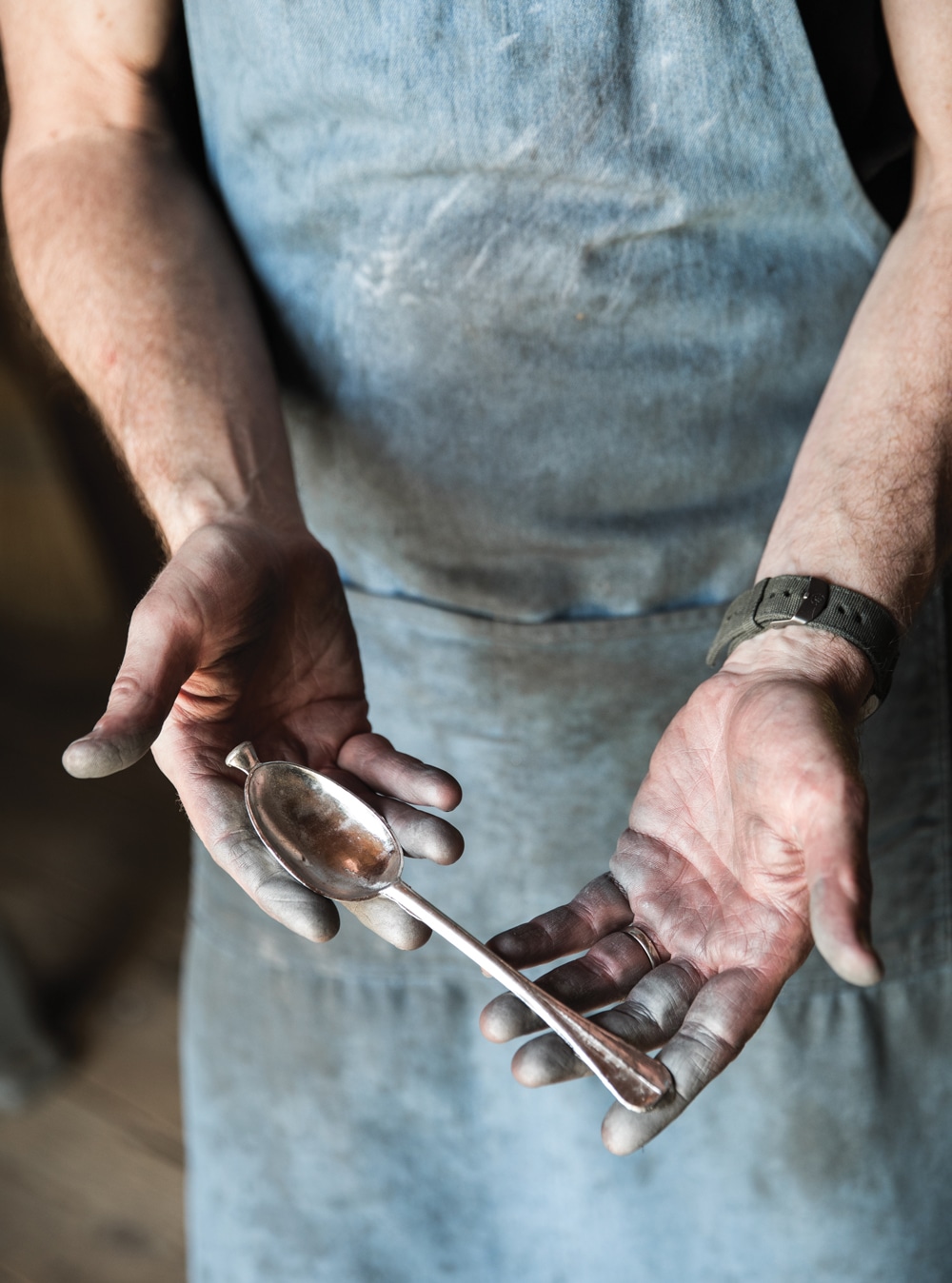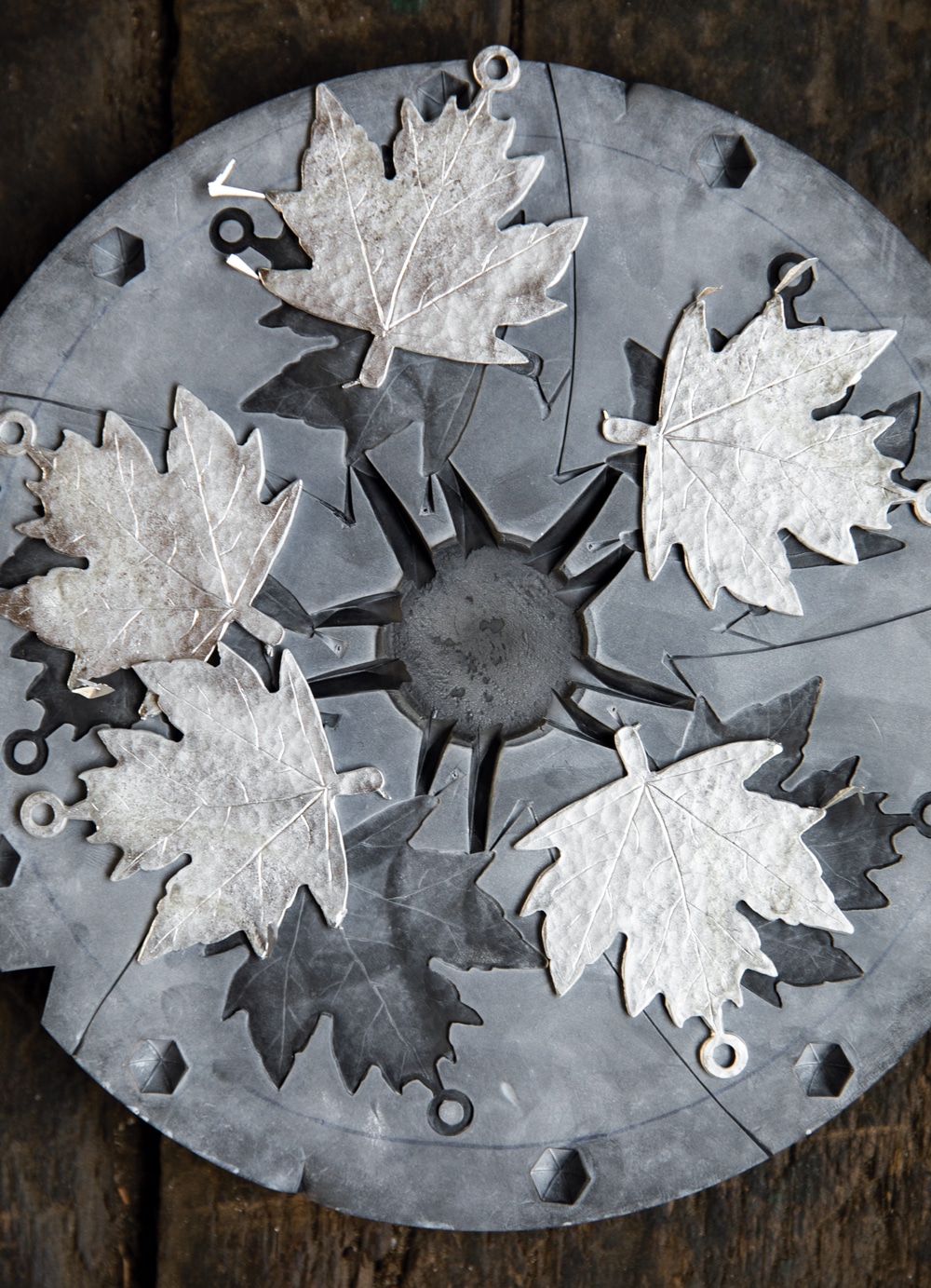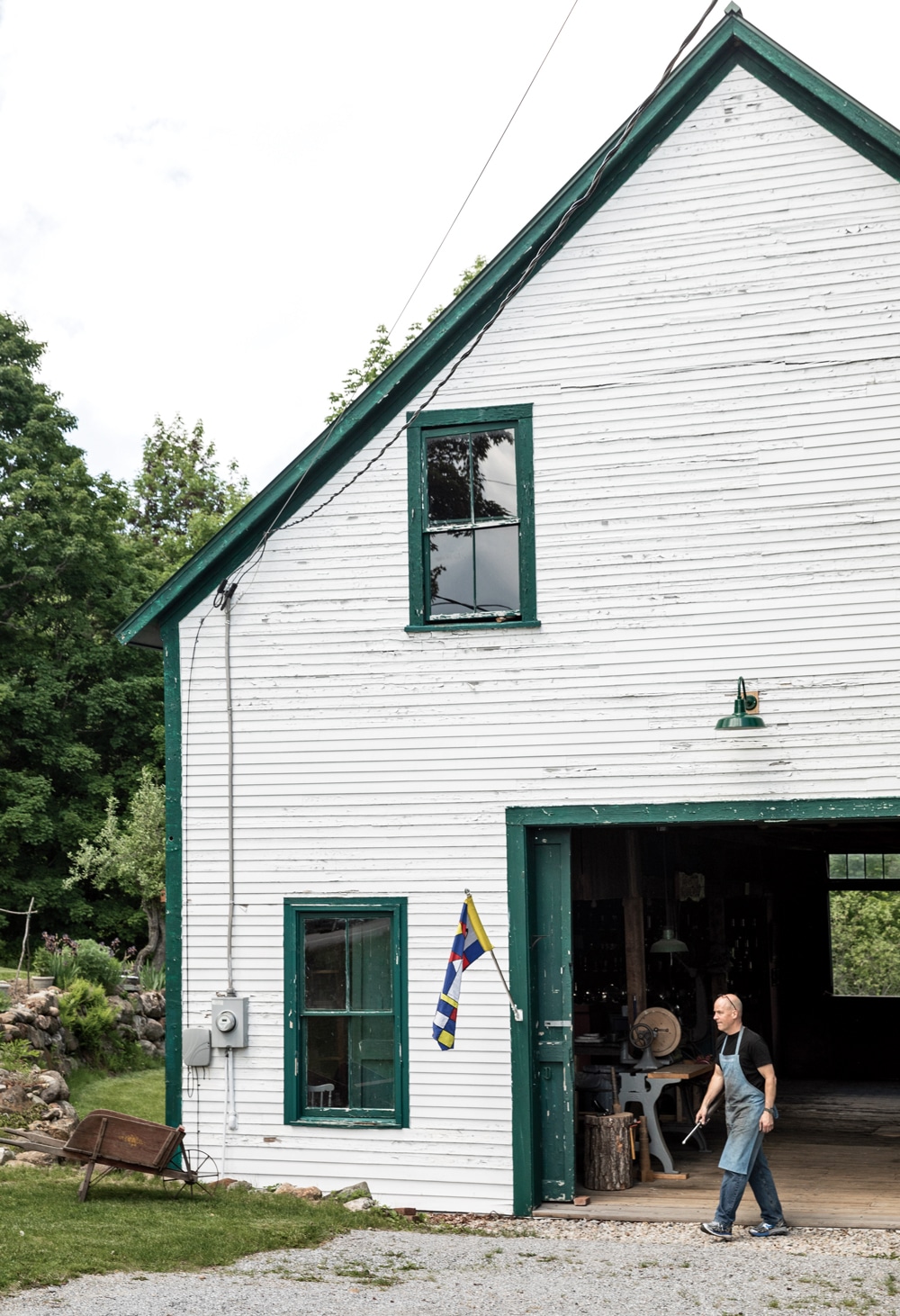Vintage Craft, Modern Polish | Open Studio
From tea sets to martini glasses, New Hampshire’s Jon Gibson transforms pewter into instant heirlooms.

Jon Gibson trims the edge of a pewter bowl on his antique lathe.
Photo Credit : Greta RybusSomething about pewter evokes more than a whiff of colonial history. The early metal conjures up molten threads pouring into molds, the dusky smell of heated tin, the imagination of craftsmen wearing Paul Revere–style billowy shirts and buckled shoes.
“I’ve always loved pewter and the history of this craft,” says Jon Gibson, who practically whispers in the presence of molds from the 1800s at his Washington, New Hampshire, workshop. Confessing he would “travel to the edge of the earth looking for antique tools,” the 58-year-old artisan points to heirlooms for sale alongside his own work at Gibson Pewter: a London Beefeater flagon from the 1640s, squat tankards, a lighthouse-style coffeepot from the 19th century. These pewter ancestors sit on high shelves overlooking Jon’s own dazzling Queen Anne tea sets, spoons, and porringers.

Photo Credit : Greta Rybus
Partly, Gibson’s reverence might be his way of acknowledging loss—too many molds were melted down during the Civil War, their bronze used for armaments. But it might also be a nod to heredity: There’s a black-and-white photo of him, age 8, scowling as his dad, Raymond, leans over the workbench. “They made me put on a clean shirt for that picture,” Gibson says, smiling.
He kicks the switch on an 1885 lathe that’s roughly the size of a small horse, dominating a corner of his workshop, and guides it with the expertise of someone recognized as one of the country’s top traditional craftsmen. Gibson’s thick pewter spoons rest in the hand like tangible chunks of history. His Queen Anne tea set is elegance itself. And he can’t keep up with demand for his sharply modern martini glasses.

Photo Credit : Greta Rybus
I watch as Gibson takes a thin, flat disk of pewter—slightly larger than a CD, and containing absolutely no lead—and clamps it onto the lathe. He then teases out a shape, elongating it with an old pointed tool called a hand spinner, working the metal much the way a potter draws a vessel from a lump of clay. Disk transforms into cup. Mesmerizing. On the bottom, the maker’s mark, called a touchmark, identifies this as a piece of Jon Gibson pewter.
Across the room, a dipper rests in a vat of molten pewter. An adjacent worktable holds assorted hand tools and a rubber mold of maple leaves, Gibson’s design for the 2018 Christmas ornament, both delicate and enduring. I catch a glimpse of what this obsession is about, passed down from generation to generation. It’s what led Gibson’s father to create Gibson Pewter in 1966, as a seasonal business, in Hillsborough, New Hampshire.

Photo Credit : Greta Rybus
“We hauled this lathe back and forth from our home in Providence every summer when I was a kid,” Gibson recalls as he eyes the machine, which weighs roughly 1,000 pounds. “It’s a monster, but we couldn’t leave it in an unheated barn all winter.”
Yet pewter was never a career for his father, a Congregational minister, who “didn’t think it was possible to make a living doing this work.” So when Gibson grew up, he sold commercial real estate in Manhattan; his wife, Camille, worked on costumes at the New York Shakespeare Festival.
“We were in the thick of it,” Gibson recalls. “But real estate was tanking in the city in the early ’90s, and we didn’t want to raise a family there. I wanted to get back into pewter, at least part-time.” They moved to New Hampshire, and Gibson kept his real estate license while he “relearned” what his father had taught him. Memory and many hours kicked in.

Photo Credit : Greta Rybus
Five years ago, Gibson relocated his pewter operation to a former general store in Washington. He’s excited about the workshop/learning center he’s now creating in the adjacent barn, which promises to be an inviting space for his museum of antique tools and pewter, a display of some of his father’s work, and a place to pass on his knowledge.

Photo Credit : Greta Rybus
“I would love to know there’s someone who will keep it going,” he says. “There aren’t a lot of Jon Gibsons out there, just a handful of us. I feel duty-bound to keep the craft alive, to keep people’s eyes open to history.”
He inspects the cup resting in his hand. There are at least 10 more steps to go before he deems it finished. But the look is unmistakable—pewter is a metal that seems to link old worlds with new. “We take the trouble to smooth the edges,” he says. “There is nobody doing anything like this.”
For information, go to gibsonpewter.com.
Annie Graves
A New Hampshire native, Annie has been a writer and editor for over 25 years, while also composing music and writing young adult novels.
More by Annie Graves

